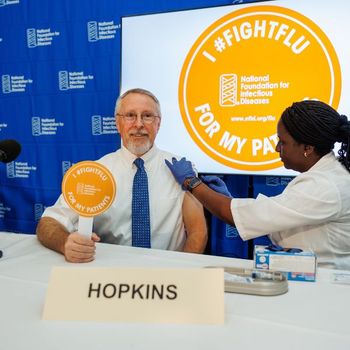
'Five-Second Rule' Unsupported by Science
When you were a kid, you might have heard a parent or sibling cite the “five-second rule” before swooping down on a piece of fugitive salami or a wayward grape. The basic premise is that once food is dropped on the floor you have a time limit of five seconds before it becomes unsafe to eat. The problem with the theory, according to microbial ecologist Jack Gilbert, is that it simply isn’t true. Gilbert is a group leader at the U.S. Department of Energy’s Argonne National Laboratory biosciences division, a professor at the University of Chicago and the director of the Microbiome Center.
“If I dropped anything on the floor right here in my office, it would pick up millions and millions of bacteria in milliseconds,” Gilbert said.
In 2006 a study published by researchers at Clemson University found that 99 percent of bacterial cells on a sheet of tile transferred to a piece of bologna after a period of five seconds.
However, Gilbert said that while there is always a possibility of picking up a dangerous pathogen, the probability in sanitary countries like the U.S. is usually very low.
“I’ll make a point in my lectures of putting my hand on the floor and licking it,” Gilbert said. “If you’re healthy and not immuno-compromised, and your food falls on the floor, even if you’re a child, there’s normally no harm at all in consuming it.”
Even better, ingesting the microorganisms around you, especially as a child, could help lower the risk of developing asthma and allergies by desensitizing your immune system to allergenic stimuli.
“Eating food off of the floor, as an infant, could significantly reduce chances of having allergies, because you’re exposed to a larger variety of microorganisms,” Gilbert said. “That health benefit is normally attributed to building a tolerance to the outside world.”
Even places that we think of as dirty are unlikely to make you sick. As a part of his home and hospital microbiome projects, Gilbert and his team have swabbed and tested many surfaces, from toilets to cell phones.
“I never found anything in any of the restrooms, homes or hospitals that I looked at where if I dropped food there would be a high probability that I’d get sick,” Gilbert said. “Just because something is unpleasant doesn’t make it harmful.”
In the end, Gilbert said, it’s still difficult to replace the five-second rule with something more reasonable, because there just isn’t enough experimental data on the subject.
Source: Computation Institute
Newsletter
Stay prepared and protected with Infection Control Today's newsletter, delivering essential updates, best practices, and expert insights for infection preventionists.






